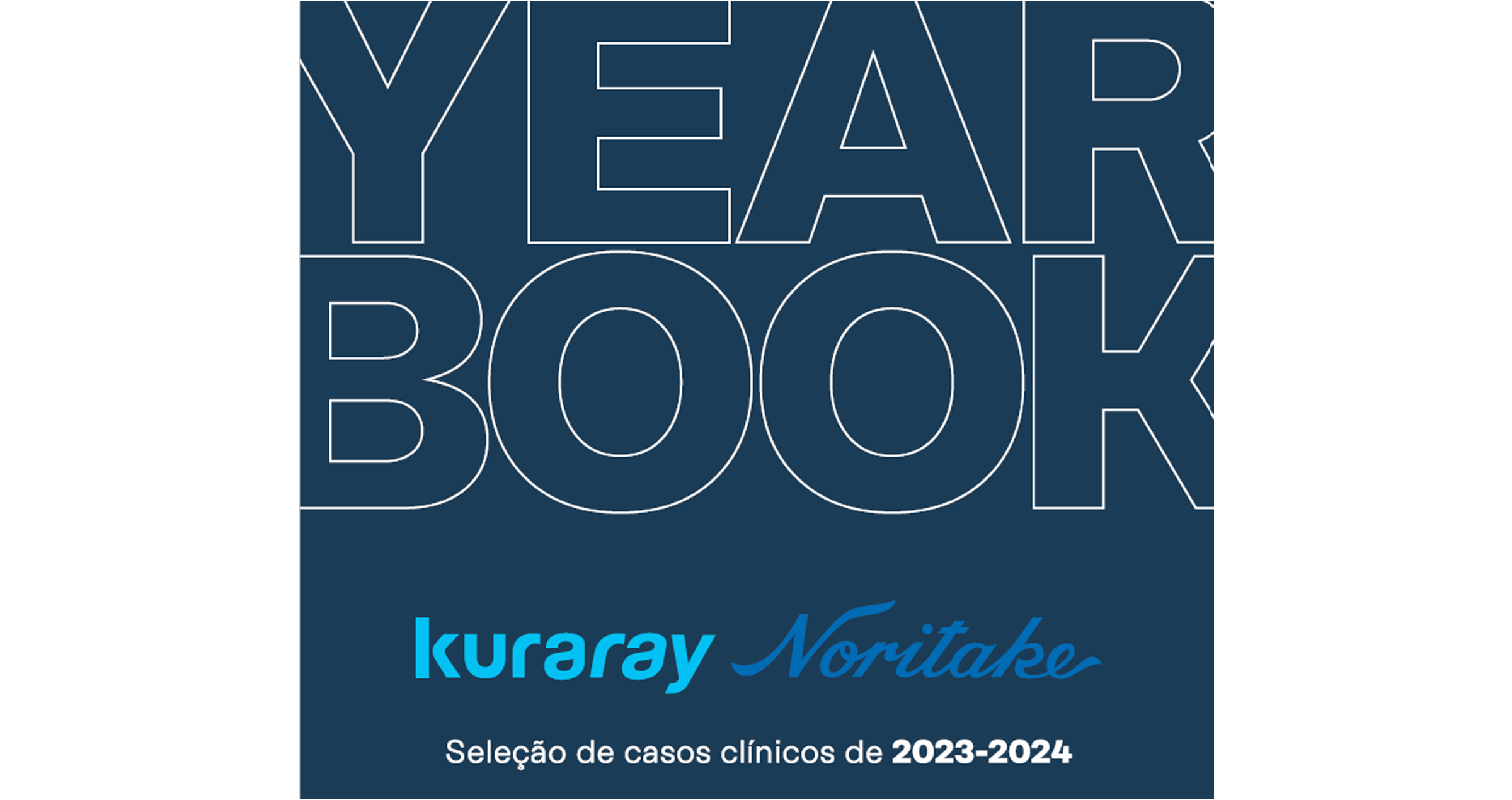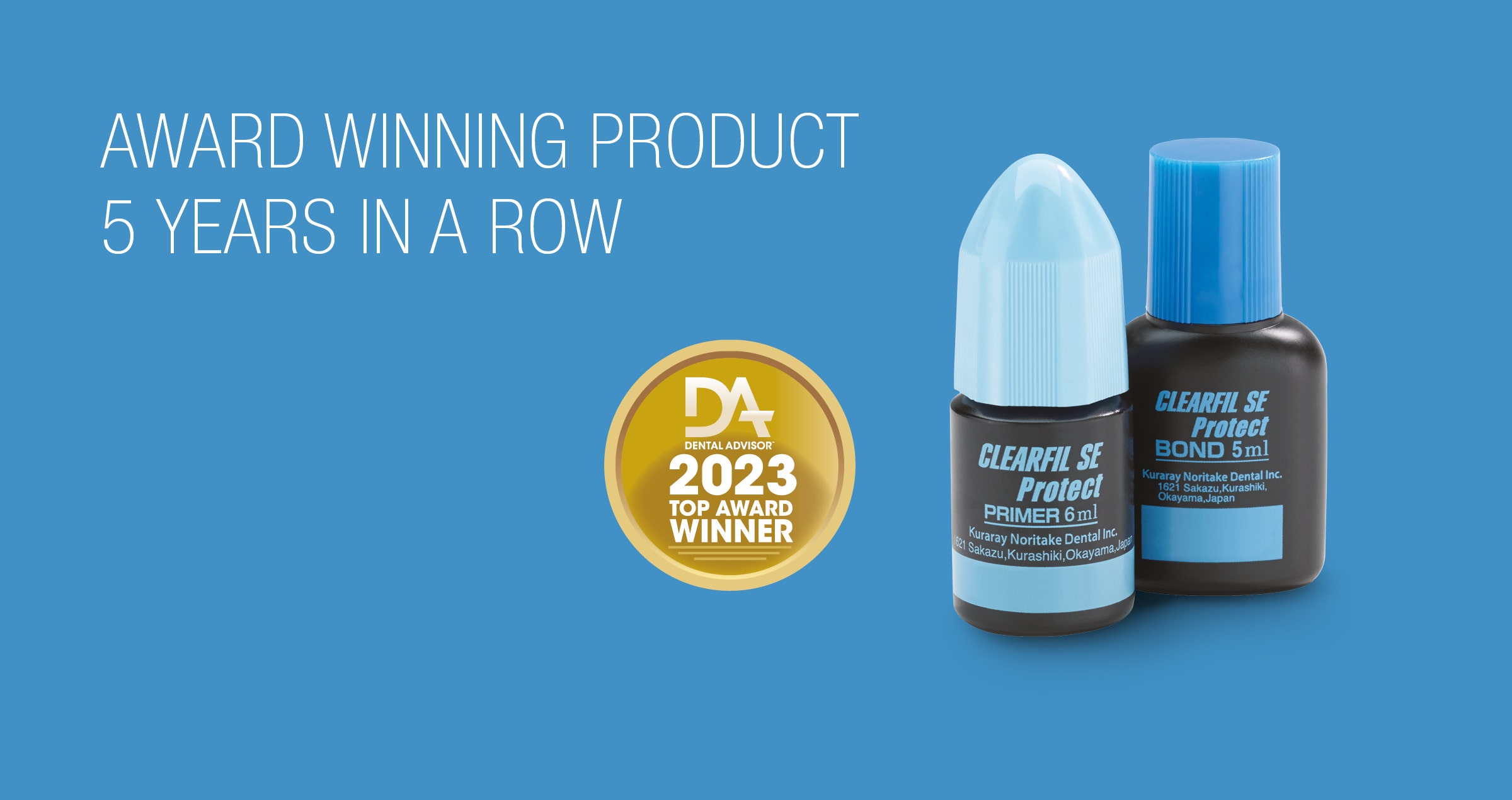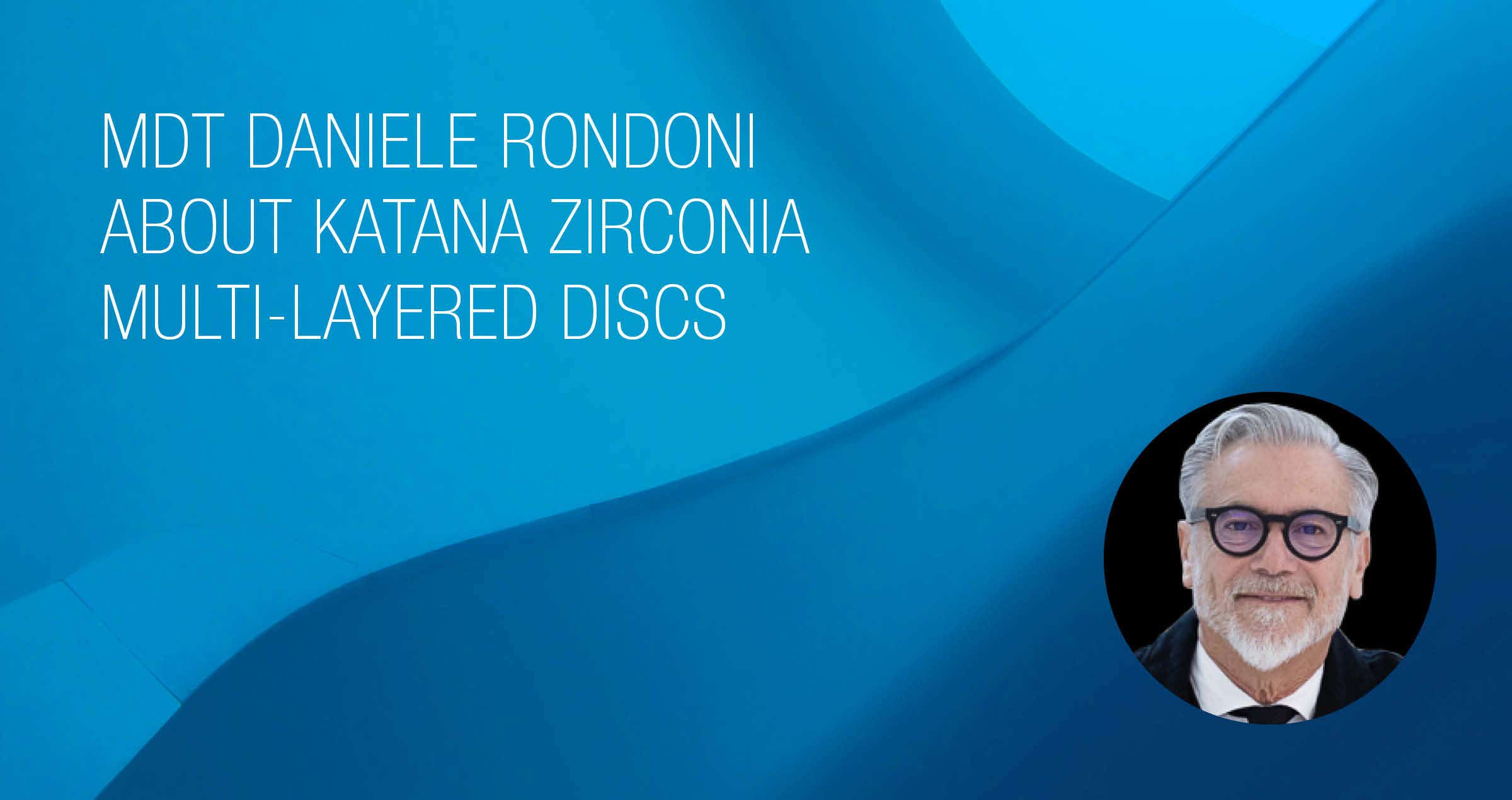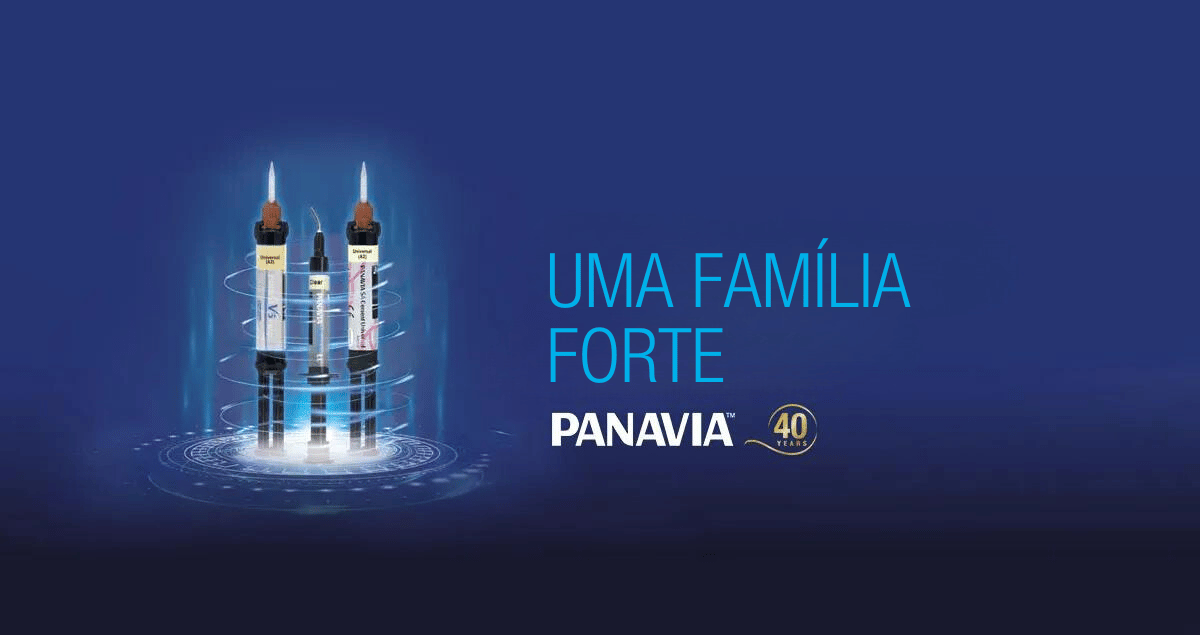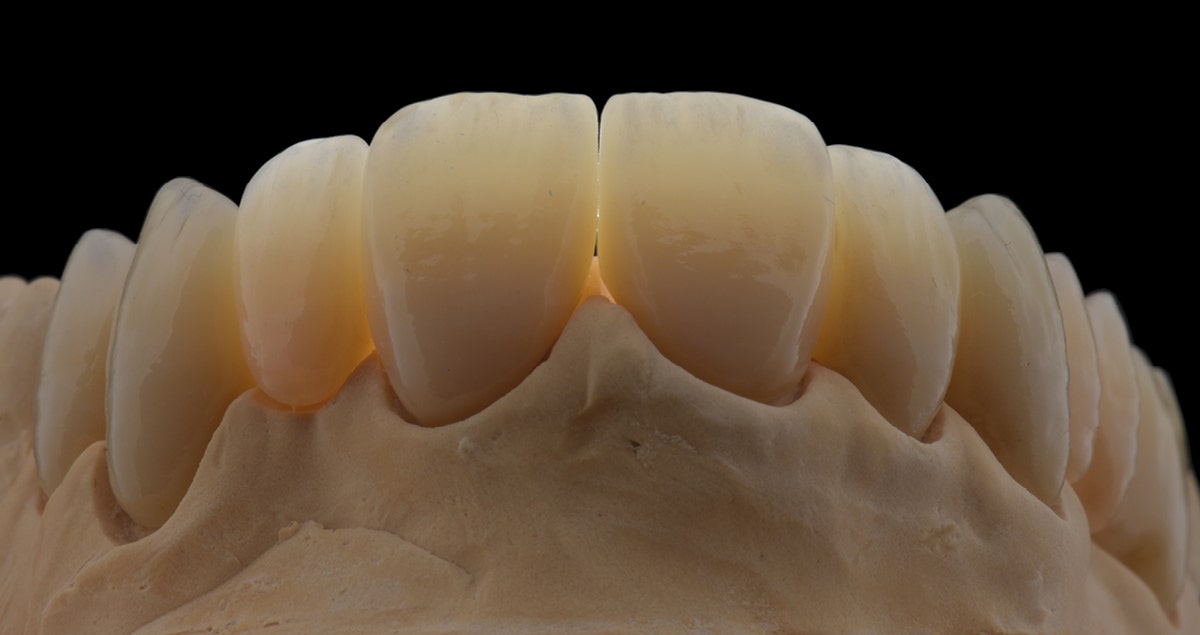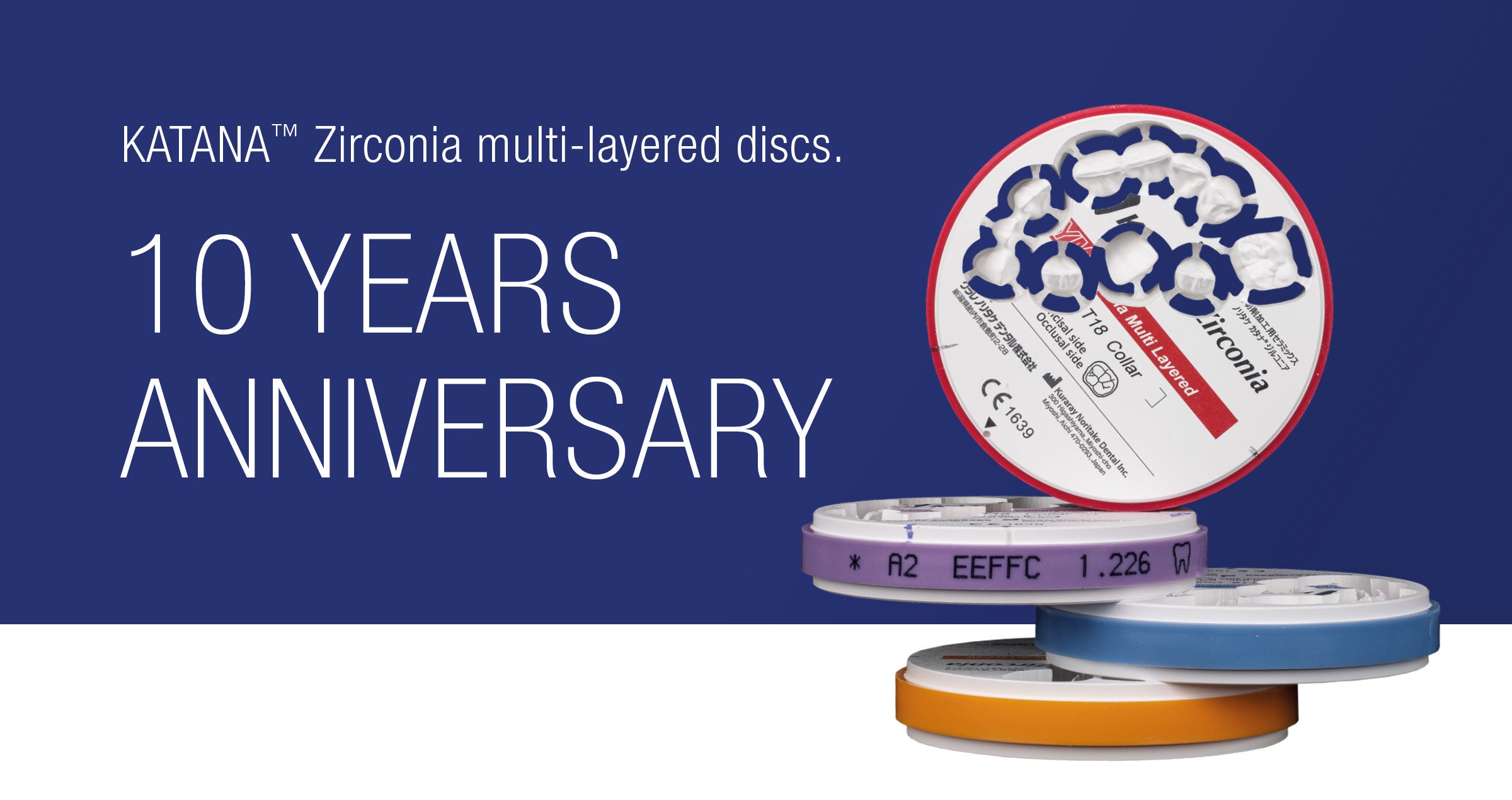Entrevista com Daniele Rondoni para marcar o 10º aniversário da KATANA Zirconia ML
Pouco antes do KATANA™ Zirconia ML ser lançado no IDS em Colónia há dez anos, tive o prazer de ser convidado para o Japão. Nós visitamos as instalações de produção da KATANA Zirconia e aprendemos com Kazunobu Yamada e Takuro Nagura como o novo material funcionava. Até o momento, todas as zircónias dentais que usei eram brancas e bastante opacas.
Fiquei imediatamente impressionado com a complexidade do procedimento de produção, incluindo todas as medidas tomadas pela Kuraray Noritake Dental para fornecer um material extremamente alto e qualidade em branco. Os blanks pareciam ter uma estrutura multicamada extremamente homogênea e uma alta densidade responsável por bordas estáveis e superfícies lisas. O que nos foi dito na fábrica foi confirmado por Kazunobu Yamada, que compartilhou sua experiência e nos mostrou vários casos full-contour. Fiquei agradavelmente surpreso com o fato de ele ser capaz de produzir resultados impressionantes sem adicionar nenhuma cor. Além disso, Kazunobu Yamada foi obviamente capaz de polir a superfície de suas restaurações em segundos. A superfície perfeitamente lisa nos permitiria evitar o uso de esmalte, que costuma desgastar muito rapidamente, deixando uma superfície potencialmente áspera que pode prejudicar o antagonista.
Com base no que aprendi no Japão, voltei para a Itália e comecei a experimentar o novo material incrível. Enquanto Kazunobu Yamada identificou o KATANA Zirconia ML como a solução para restaurações monolíticas na área posterior, comecei a usá-lo em todas as regiões da boca - com diferentes conceitos de design, desde contorno total até microcorte com microcamadas na vestibular área. A área de contato oclusal foi sempre mantida em zircónia lisa e polida.
Fig. 1. Exemplo inicial de restaurações anteriores feitas de KATANA Zirconia ML individualizadas com CERABIEN™ ZR usando a nova técnica de microcamadas.
Fig. 2. Projeto de redução possível.
Durante o período de testes, aprendi muito sobre a nova zircônia, tão diferente das gerações anteriores. O insight mais importante foi que as condições de processamento têm um grande impacto no resultado final. A Kuraray Noritake Dental forneceu suporte valioso, por ex. na forma de protocolos de sinterização e recomendações de processamento e acabamento. Isso me ajudou a desenvolver meu próprio fluxo de trabalho e conceito com base em um design de contorno completo na região posterior e diferentes opções de microcutback com microcamadas na região anterior. Para mim, esta é uma combinação perfeita do novo tipo de zircónia (KATANA) e o material de porcelana tradicional (CERABIEN ZR Luster Porcelain e Internal Stain).
Em maio de 2013, em uma reunião do Noritake Study Club em Florença, Itália, apresentei a nova abordagem pela primeira vez. Muitos colegas ficaram entusiasmados e começaram a adotá-lo. Enquanto outros desenvolvimentos como variantes de materiais mais translúcidos (cúbicos) e uma nova geração de zircónia multicamada com resistência à flexão e gradiente de translucidez aumentaram as opções de aplicação e o potencial estético, a microcamada tornou-se uma abordagem verdadeiramente popular usada por técnicos de prótese dentária em todo o mundo . Em 2016, foi reconhecido como um fluxo de trabalho relevante durante uma reunião fechada da European Academy of Aesthetic Dentistry.
Fig. 3. Superfícies de zircónia palatina perfeitamente polidas de restaurações anteriores.
Fig. 4. Caso mais recente mostrando um paciente que recebeu restaurações feitas de KATANA Zirconia STML …
Fig. 5. … finalizado com CERABIEN ZR Internal Stains e uma microcamada de CERABIEN Luster Porcelain LT1.
Mas qual é a principal razão para o sucesso do conceito e da zircónia multicamada com a KATANA Zirconia ML como pioneira? Na minha opinião, não deve ser implementado por maior simplicidade ou razões económicas, como se poderia supor à primeira vista. O tempo economizado no procedimento de estratificação deve ser gasto em outras tarefas, como texturização da superfície e um ajuste fino do procedimento de processamento. O benefício real é que o KATANAZirconia ML e seus sucessores permitem melhores soluções adaptadas às necessidades do paciente. Em primeiro lugar, eles nos permitem salvar a estrutura natural do dente, pois a espessura necessária da parede é reduzida. Eles também oferecem vantagens mecânicas, pois o lascamento é evitado e a área de contato oclusal permanece lisa ao longo do tempo. Em meu laboratório dentário, mudamos completamente nossos fluxos de trabalho e – preferindo uma abordagem mais conservadora sempre que indicado para o caso em questão – muitas vezes abandonamos a estratificação completa.
A KATANA Zirconia pode ser considerada uma grande contribuição para o fluxo de trabalho digital no laboratório e consultório odontológico, o que aumenta a eficiência dos procedimentos protéticos. Com a série KATANA Zirconia Multi-Layered, é fácil cumprir nossa promessa de oferecer a melhor qualidade e estética possíveis. A razão é que os materiais nos apoiam de maneira ideal, oferecendo a combinação perfeita de tradição e inovação.





